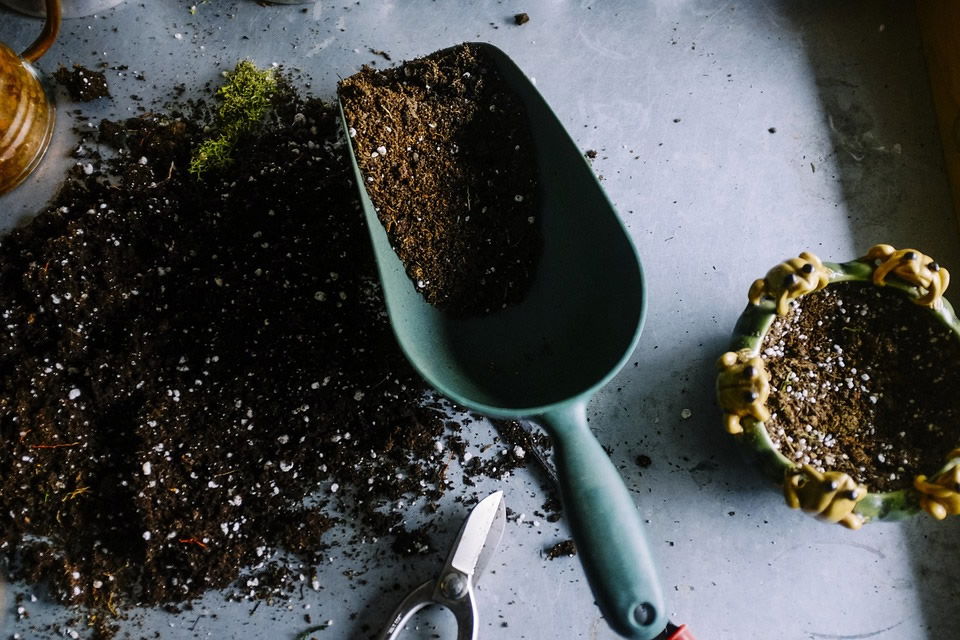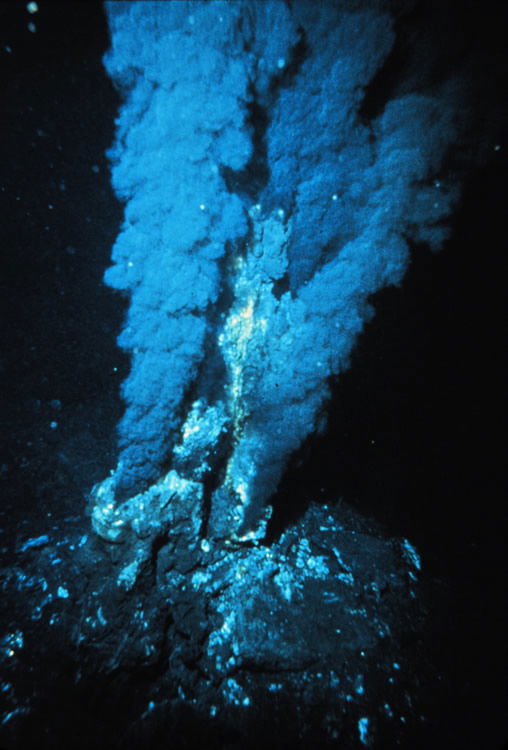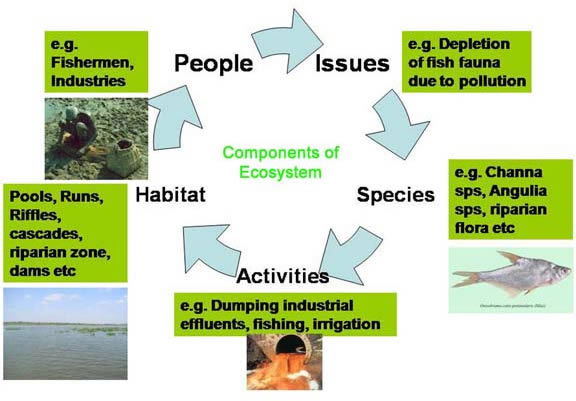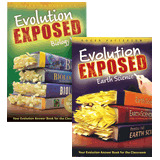
The Dirt Is Alive: God’s Design for Soil Microbiome
Abstract
God made dirt—before He cursed it along with the significant amount of life present in the soil. In one acre of land, there is an equivalent biomass of an octopus in terms of the microbial life. The life in the earth is so immense that it directly affects crop yields and the food chain. While it’s often swept under the rug, we shouldn’t dismiss the amazing design found in soil particulates.
Don’t touch that! You’ll soil it!
–Carl Fredricksen, cranky main character in Disney/Pixar’s Up
Mud Pies and Microbes
I remember making mud pies as a child for my mom—she didn’t like them too much.1 Pie making was always the best just after a good rain, but I had no idea that I was covering my hands in germs. Though I now know there was probably other biomaterial present in the soil (e.g., the organic matter called humus), back then the combination always warranted washing my germy hands when I went inside. In terms of our overall health, there is a fine balance between all the germs in the dirt and all the other stuff that it is made of. Dirt is dirty, but not in the ways that we often think.

Image from Pixabay.
While earth is typically considered to be only rocks and dirt, life is also abundant in soil. But we cannot observe all the living things in the soil with our eyes—they require a microscope for us to see them.2
We know that “in the beginning, God created the heavens and the earth” (Genesis 1:1); however, Scripture is silent on using words like bacterium, germ, or microbial ecology. Therefore, though no one can assertively determine which day God actually created bacteria, we have a pretty good idea when bacteria were brought into existence.3 There is no doubt that God created “everything” and called it “very good,” so that must also include bacteria. Since we find bacteria with a purpose in dirt and we know that God created the dirt, we know that God created the dirt with microbes as well.
We often neglect the study of microbes in the soil because they are not typically what make us sick in our everyday lives. The scientific field that studies bacteria living in the environment is called microbial ecology.4 While we often think of Escherichia coli (the bacteria I study) as making us sick, there also is a significant amount of E. coli worth studying in the environment—and that’s why I’m a microbial ecologist (to study how E. coli colonizes the intestinal ecosystem). I primarily look at bacteria in the intestinal ecosystem, while other microbial ecologists look at and examine the bacteria present all over the earth.
The Teeming Life of the Earth Itself
Microbial ecology is an old discipline that dates back to the late 1800s. While the discipline itself is old, we have not made a lot of progress until recently with the advent of molecular microbiology. All microbial ecologists have some basic principles that govern how we examine the microbes that God made, but I will briefly discuss four principles here as they relate to soil ecosystems.5
The first basic principle in microbial ecology is that everything is everywhere, but the environment selects what grows best in that particular spot. Our common sense struggles to accept that everything is everywhere because we know that all large animals are not everywhere. However, scientists have studied soil from literally all over the planet and have shown very clearly that everything is everywhere concerning the soil.6 Each continent has special features that select for one prominent microbe over another (e.g., Asia is colder than Africa on average), but we find every major kind of microbe in every gram of soil tested.
While everything can be everywhere, that doesn’t always mean that the soil is considered balanced or in a healthy state. For example, ecological disasters like an oil spill will put the soil microbiome off-balance momentarily.7 As the disaster happens, the microbes shift in their microbial diversity to accommodate the new conditions and maintain those conditions until normal conditions return. Some recent scientists have argued that certain soils should be treated with more care to preserve their microbial diversity and, consequently, to make those soils healthier. Over the years, heavy farming has ruined the Netherlands’ soil, so leading scientists are reintroducing microbes that existed before the intense farming.8 Interestingly, God told us in His Word to give the land a rest (Exodus 23:11 and Leviticus 25:4), which probably would have saved the Netherlands from having to intervene in this way.

The Great Plate County Anomaly. Image by Estevezj, via Wikimedia Commons.
A second important principle in microbial ecology is the Great Plate Count Anomaly.9 Knowing the structure of DNA and having developed the Polymerase Chain Reaction (PCR), we can visualize biological materials under a microscope, using both of these new technologies. For the first time in history, microbial ecologists are able to visualize all living things under a microscope, using a novel technique called Fluorescence In Situ Hybridization (FISH). FISH allows scientists to visualize the DNA of microbes present in any given sample. Prior to this new technique, we thought that the total number of microbes living on the planet were only the ones we could grow in petri dishes. However, the FISH technique taught us that we could only grow a fraction of a percent of all microbes in the soil. Other sophisticated techniques have confirmed that there are entire groups of soil microbes routinely found by DNA alone that we cannot grow in the lab,10 and are known by a particular abbreviation OTU—Operational Taxonomic Unit. Current research efforts are focused on trying to grow any of these OTUs in the lab, in hope of finding out what they actually do since they are so abundant. Surely, they must be important if God made them, but they remain a great mystery to us since we know so little about them.
The third basic principle in the microbial ecology of soil is that we find myriad useful compounds for diverse purposes. We have incorrectly thought that we are in an arms race with infectious bacteria, but they are actually in an arms race with each other because they produce antibiotics against each other and likely have since the earth was created.11 Antibiotic resistance genes in bacteria date back to graves as early as bubonic plague victims, indicating that microbes were using both antibiotics and antibiotic resistance genes at least 400 years ago. Since we know that genes responsible for antibiotic resistance have always existed, we can know that microbes change only very minimally—microbes remain microbes, which is another confirmation of the biblical principle that everything reproduces after its kind. The kinds of changes we see in microbes (e.g., antibiotic resistance) must be part of the original design for microbes, and highlight which kinds of changes are possible (“microevolution”) and which are not (“macroevolution”).12 Microbes have the ability to adapt to mounting selective pressures from antibiotics and can either develop antibiotic resistance genes via mutation or by acquiring the necessary antibiotic resistance genes from other bacteria. In either scenario of developing antibiotic resistance, there always has to be a mechanism already in place for the bacteria to resist the antibiotics. Antibiotic resistance is not something that appears suddenly out of nowhere—it always arises from slight modifications of what already exists.
While the history of antibiotics began with Alexander Fleming growing mold in a lab, the search for antibiotics quickly turned from the antibiotic penicillin to the antibiotic streptomycin. Streptomycin was discovered by surprise from a soil bacterium called Streptomyces. Since streptomycin was originally isolated, we have learned that the Streptomyces produce most antibiotics from the past century. As a result of finding streptomycin in soil, scientists have looked for and found other antibiotics in soil. If we had a proper view of antibiotics in the soil as just described, then we would have been able to find more antibiotics sooner than when we did.

Streptomyces sp. Image by Moez, via Wikimedia Commons.
Another principle about the microbial ecology of soil is that many of its compounds still have unknown functions.13 Compounds present in the soil include not only antibiotics, but also novel enzymes capable of breaking down nearly anything (even chemicals synthesized in present-day labs).14 Even the radioactive uranium that leaked from the Oak Ridge National Laboratories was taken care of by bacteria in a process known as bioremediation.15 Bioremediation is the process whereby microbes break down a pollutant in an environment and clean it up without the use of external intervention. When the uranium began leaking at the Oak Ridge National Laboratories, scientists and society began to worry because we had never generated radioactive waste and didn’t know how to clean it up. Too many times, modern society thinks that we are advanced because we developed something we haven’t seen before. In all actuality, most of our novel chemicals probably aren’t using new chemistry (i.e., the chemistry already existed), and God made a bacterium that has always been able to break down that chemical. My general rule of thumb for environmental disasters is to observe what the microbes do to clean up what we make a mess of. Then we should try to foster growth of those microbes to speed up the cleaning process.
Actually, we’re braggadocious to think we’ve made something new that no bacteria is capable of breaking down. Since we never looked for the bacteria with those functions for the past six thousand years, why should we be surprised to find a bacterium capable of breaking down something we’ve never seen before? Scientists are always supposed to be discovering something new, so it is ironic for them to act surprised when they do find something new. We should search for bacteria, fully expecting to find soil bacteria with new and surprising capabilities. And we should actually respond by worshipping our Creator for making life possible. Essentially, there are probably bacteria in existence already that can break down whatever we can make. If they don’t already perform that function, then they probably have the genes necessary to adapt to the new chemical very easily. This is not evidence for molecules-to-man evolution but merely variation within an organism that God created. God’s design of soil bacteria is truly amazing.
Important Biogeochemical Cycling: Evidence of Design
Everything lives in communities, from Christians joining a church to microbes interacting with each other in the soil. Communities are an important part of God’s creation because they abundantly proclaim the glory of God. A microbial community consists of several competing microbial populations within a given location. The microbial communities highlighted in this article are found in the soil, but these are not the only microbial communities on the planet. It’s important to consider that microbes do not live alone, but live in what looks to be a continuing cycle.

Black smoker at mid-ocean ridge hydrothermal vent in Atlantic Ocean. Image by Bricktop, via Wikimedia Commons.
Frequently, scientists isolate a new microbial species with an ability never seen before.16 Other reports find life in what are thought to be extreme environments where nothing could possibly live.17 Every time scientists look for life in extremely unusual places, we always find that bacteria have already been living there. Not only are they living in remote places, but there are thriving microbial communities that have never been described. When we assume that there are no bacteria in a given location, we put ourselves at a distinct disadvantage because we should expect to find microbial communities living everywhere we go. God made bacteria to live in communities. So we should expect to find microbial communities—not microbes living in isolation. Most evolutionists begin thinking that there are microbes living in isolation, but they are surprised to later find that entire microbial communities were already there from the beginning. As a result of being surprised at finding new microbial communities, we are in fact treading on what God made without giving Him any credit for the life that He created there. Evolutionists rob God of His glory because they assume that some microbes live in total isolation though this is never the case. Instead of saying that no microbe lives in isolation, biblical creationists say that microbes live in communities of microorganisms usually along with larger macroscopic species (i.e., fungi).

Dead Sea, Israel. Image by Xta11, via Wikimedia Commons.
Living in a community means that individual populations are interdependent on one another and, therefore, irreducibly complex. Irreducible complexity is a designed system in which removal of any single part causes the system to effectively quit working. If one population within the microbial community disappears, that vacuum puts other populations within the same community at risk of disappearing. The fact that microbes live in dynamic, interdependent communities also highlights the fact that microbial populations are designed and not random chance products—ecosystems are irreducibly complex.
A practical direct application of how we appreciate irreducibly complex ecosystems is whether we reduce, reuse, and recycle products. If we do not think that ecosystems are irreducibly complex, then we will allow junk to accumulate because we devalue the ecosystems—we choose to not reduce, reuse, or recycle, and our stuff accumulates. When we do not reduce, reuse, or recycle, we become wasteful and devalue ecosystems. One specific way that we devalue ecosystems is by the overaccumulation of chemicals in an ecosystem. Overaccumulation of chemicals that interrupt complex ecosystems causes an ecosystem to fall apart, even at the microbial level. Cycles exist within each ecosystem to control the flow of energy from one population to the next within a complex community, even at the microbial level. We should foster microbial ecosystems whenever possible because we value them and recognize that they are irreducibly complex. What’s curious is that the cycling within ecosystems is never explained in evolutionary terms—they are simply assumed to have always existed as cycles. I have looked for evolutionary explanations and the best explanation is very poor at best (i.e., there is absolutely no evidence for the evolution of ecosystems). Ecosystems must, therefore, have been always cycling forever in the past or there must have been an infinite Source of cycling that got each ecosystem cycling from the beginning.

Various components of ecosystems and their interrelationships. Image by Nilesh Heda, via Wikimedia Commons.
Microbial ecosystems must be designed because evolution cannot produce cycles from chaos. Whenever biological systems seem like they continue indefinitely, that is an indication that God must have designed them because He alone is infinite and is the only explanation for all ecosystems. “In the beginning, God created the heavens and the earth” (Genesis 1:1: one of the most amazing statements about microbial ecology ever made). On each day of Creation Week, God created an entirely functional ecosystem that could survive on its own. From the very beginning, God created all ecosystems to function from the microbial level up. The fact that ecosystems exist and function properly today means that they could not have existed for millions of years and must, therefore, have only existed for thousands of years.18 Only the Scriptural account of a six-day, recent creation is consistent with the character of God and makes sense of what we see. Half-functional ecosystems cannot exist for millions of years (or even thousands of years for each day of creation, as some people believe).
The Hygiene Hypothesis
Even though microbes everywhere perform amazing biochemistry beyond our imagination, we live in an ironic society that tries to kill these gifts from God. When teaching microbiology, I tell my students to walk up to the line of becoming a germophobe so they can limit the spread of disease, and then take one step away from it so that they don’t diminish the good microbes while they’re eliminating the bad microbes.19 My point is that our society is so afraid of germs that we often sacrifice the beneficial microbes that God created for our ecosystems on the altar of being supposedly healthy. It realistically seems that, because we have an unhealthy view of microbes, we think we have to kill all the germs and see any dirt as infectious. We have mistaken chemical filth for biological filth and wash away all the good biological “filth” that was never intended to be filth from the beginning. Cleaning ourselves has only become a daily practice in recent history. Most modern diseases such as Staphylococcus aureus or other opportunistic infections have become a problem because of how we keep ourselves overly clean. We have washed away the good germs protecting us from getting sick and have left ourselves susceptible to disease germs making us sick.

Image from Pixabay.
While we acknowledge that God made the dirt, we think it’ll hurt more than it’ll help. Children who spend less time in the outdoors have a higher incidence of autoimmune disorders.20 I would guess that even more of the emerging diseases we have in our society harken back to our obsession with overly cleaning ourselves and not letting our “dirty” hands boost our immune system. As a result of not taking proper care of our bodies, as well as the soil that God gave us stewardship over, we are experiencing heightened effects of the curse because the very dirt that was cursed is now causing ever-worsening problems (through indirect ways).
I don’t advocate that everyone reading this article should stop what he or she is doing to roll in some dirt, nor am I advocating that we should quit cleaning our houses. But I am advocating that the primary place we get sick is in public, not from diseases at home. We should wash our hands mainly while out in public and only as absolutely needed while at home—it’ll help boost our immune system.21
Redemption of Earth Also
Because familiarity breeds contempt, we often overlook the design of the earth in many ways everyday. We walk all over the earth yet don’t give it a second thought. Though I confess that I don’t always think through every step that I take, I am reminded of the old hymn “I Sing the Mighty Power of God,” which says, “Lord, how Thy wonders are displayed . . . if I survey the ground I tread.” Every step we take firmly forces us to stand on what God created. There is no reason to doubt that God created dirt, because it is complex and well designed. However, though we see God’s design, we must remember that this is a cursed creation. But even as cursed as it is, we can clearly see God’s goodness and can remind ourselves that He is coming again to redeem all of creation. We can stand firm on these truths that God created the earth—it is foundational to our understanding of Scripture.
The rest of the stanza of that hymn is listed below for you to ponder in worship.
I sing the goodness of the Lord,
who filled the earth with food,
who formed the creatures thru the Word,
and then pronounced them good.
Lord, how thy wonders are displayed,
where'er I turn my eye,
if I survey the ground I tread,
or gaze upon the sky.
Footnotes
- Interestingly, there are some people with a genetic disorder that actually have a desire to eat dirt. Dirt is high in iron. Often these people are unable to get enough iron in their diet. When this happens, they sometimes find that substances high in iron begin tasting good. In general, eating dirt to get your daily dose of iron is not the best option.
- If you put soil or rocks in a petri dish, there is an explosion of bacterial colonies in a variety of colors, shapes, and sizes. You usually find many creamy white, beige, or even some brown bacterial colonies, but there is a good chance of finding other colors including red, orange, and yellow. If you give the colonies more time to grow, there will even be fleeting appearances of blue, purple, and pink colony colors.
- See Alan Gillen, “Microbes and the Days of Creation,” Answers Research Journal, January 16, 2008, https://answersingenesis.org/days-of-creation/microbes-and-the-days-of-creation/.
- Technically, the human body is an environment that has its own set of rules to follow. For the most part, though, scientists have historically treated the human ecosystem as separate from the outdoor environment. My research is considered cutting edge because I study what keeps us healthy in addition to what makes us sick. As can be seen in the rest of this article, not all germs are bad—including E. coli.
- The primary principle of microbial ecology is that nutrients determine niches. Briefly, microbes need to be able to find the foodstuff they need, and they need to be capable of growing on it.
- Jae-Chang Cho et al., “Biogeography and Degree of Endemicity of Fluorescent Pseudomonas Strains in Soil,” Applied and Environmental Microbiology 66, no. 12 (December 2000): 5448–5456.
- The microbiome is all of the microbial life alive in a given ecosystem. For example, the human microbiome includes all the germs on our skin, in our nasopharynx, and in our intestines. The soil microbiome, thus, is all the microbes present in soil.
- Carrie Arnold, “Soil Has a Microbiome, Too,” Smithsonian, August 11, 2016, http://www.smithsonianmag.com/science-nature/soil-has-microbiome-too-180960088/.
- Raffi Khatchadourian, “The Unseen,” The New Yorker, June, 20, 2016, http://www.newyorker.com/magazine/2016/06/20/miracle-microbes.
- Techniques that analyze the 16S rRNA sequences by quantitative PCR, FISH again with internalized standards, and metagenomics sequencing are the primary other techniques that identify unknown bacteria from soil samples.
- The truth about antibiotic resistance is that it has existed from the beginning as a way that microbes have been developing against each other (i.e., humans were not the first to cause antibiotic resistance in bacteria through the overuse and misuse of antibiotics).
- Microevolution is the process of small changes that are possible and observable by modern science. Microevolution is responsible for the small changes that we see out in nature that occur from generation to generation via natural selection. Macroevolution, however, is the view of the universe that Darwin taught in which large changes occur (i.e., from molecules to man). Macroevolution has never been observed and goes directly against the plain teaching of Scripture.
- Anna Azvolinsky, “New Antibiotic from Soil Bacteria,” The Scientist, January, 7, 2015, http://www.the-scientist.com/?articles.view/articleNo/41850/title/New-Antibiotic-from-Soil-Bacteria/.
- The entire debate about global warming is based on the idea that bacteria are either incapable or highly unlikely to breakdown anything man made. Secular scientists were surprised to learn that there is a bacterium capable of breaking down waste products from nylon production—because nylon is a man-made substance. But the irony is that the same chemistry used to make the nylon was the same biochemistry used to break it down. Plus, the genes responsible for breaking down the nylon waste products were already in existence before the nylon. Nature just revealed to us what it had already known and what God had placed there originally.
- Hannah Hickey, “‘Extreme Engineering’: Researchers Use Bacteria to Reduce Uranium to Safe Levels,” Stanford, May 18, 2006, http://news.stanford.edu/pr/2006/pr-criddle-052406.html.
- Pam Frost Gorder, “New Genus of Bacteria Found Living Inside Hydraulic Fracturing Wells,” The Ohio State University News Room, September 5, 2016, https://news.osu.edu/news/2016/09/05/new-genus-of-bacteria-found-living-inside-hydraulic-fracturing-wells/.
- Tim Sandle, “Essential Science: New Types of Microbial Life in the Oceans,” Digital Journal, October 3, 2016, http://www.digitaljournal.com/tech-and-science/science/essential-science-new-types-of-microbial-life-in-the-oceans/article/476267; and Sean Nee, “The Modern, Molecular Hunt for the World’s Biodiversity,” The Conversation, October 27, 2015, https://theconversation.com/the-modern-molecular-hunt-for-the-worlds-biodiversity-48069.
- Most of life still depends on the sun even at the microbial level. Cyanobacteria, in fact, require sunlight. However, bacteria can sustain life in the absence of light for a limited amount of time. Since we know that the sun wasn't created until Day Four, the first ecosystems created from Day One through Day Three wouldn't have been able to sustain life indefinitely, but three days without sunlight would not present a problem.
- I don’t grow microbes around my house, just in the lab. But I don’t go home and kill every microbe either.
- Rachel Nuwer, “The Great Outdoors Is Good for Allergies,” News from Science, May 7, 2012, http://www.sciencemag.org/news/2012/05/great-outdoors-good-allergies.
- This concept inspired a business to develop a soap and a spritz containing soil microbes to help eliminate body odor. See Julia Scott, “My No-Soap, No-Shampoo, Bacteria-Rich Hygiene Experiment,” The New York Times Magazine, May 22, 2014, http://www.nytimes.com/2014/05/25/magazine/my-no-soap-no-shampoo-bacteria-rich-hygiene-experiment.html.
Recommended Resources

Answers in Genesis is an apologetics ministry, dedicated to helping Christians defend their faith and proclaim the good news of Jesus Christ.
- Customer Service 800.778.3390
- © 2024 Answers in Genesis



